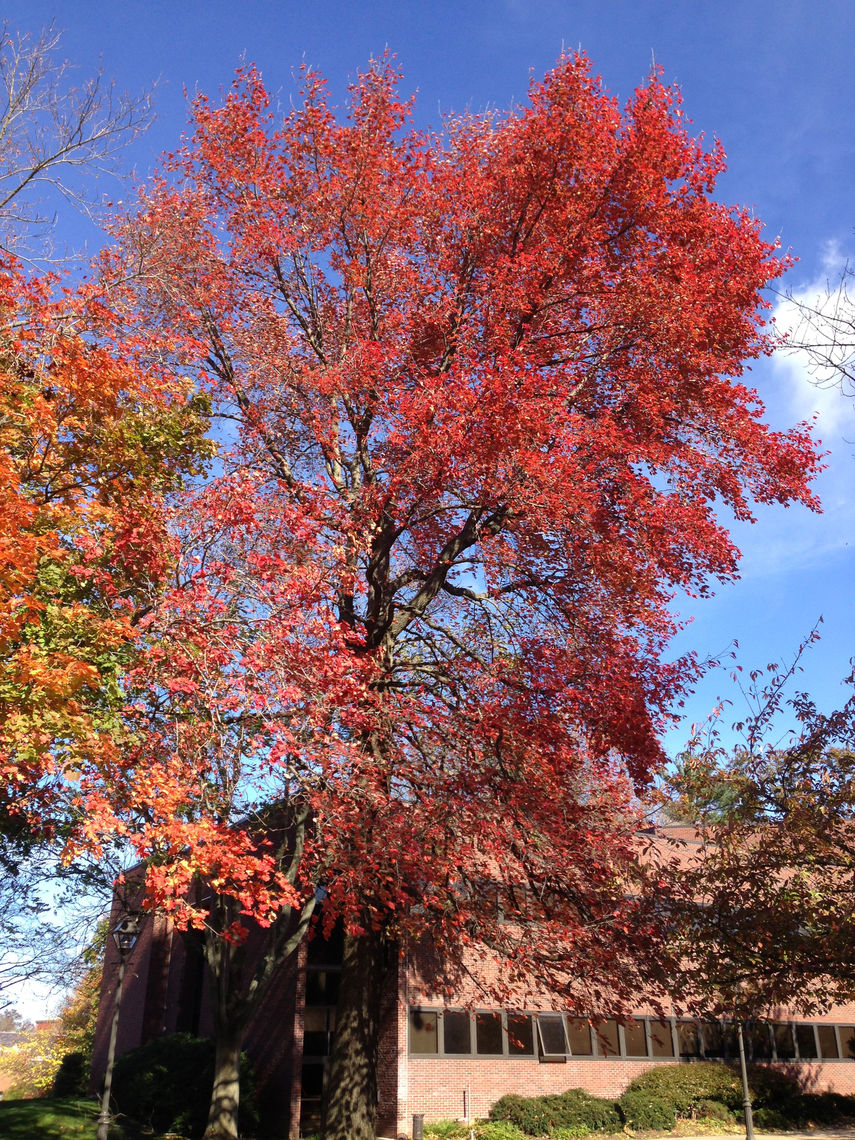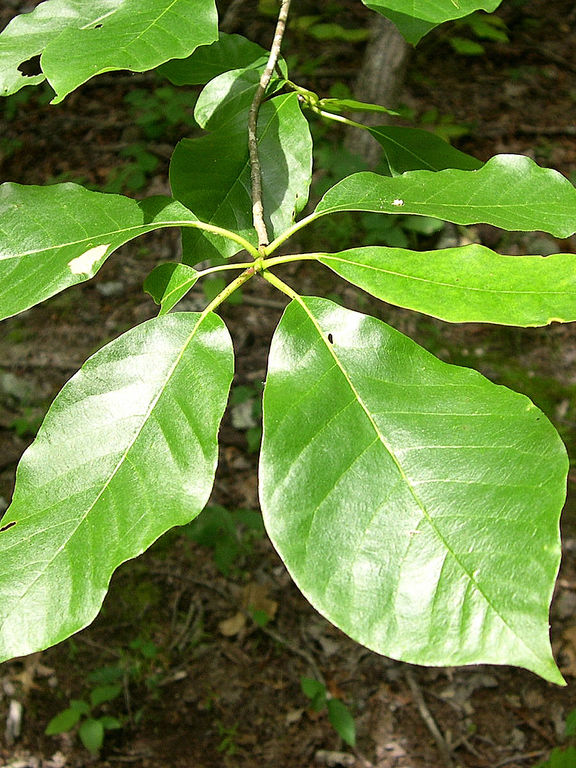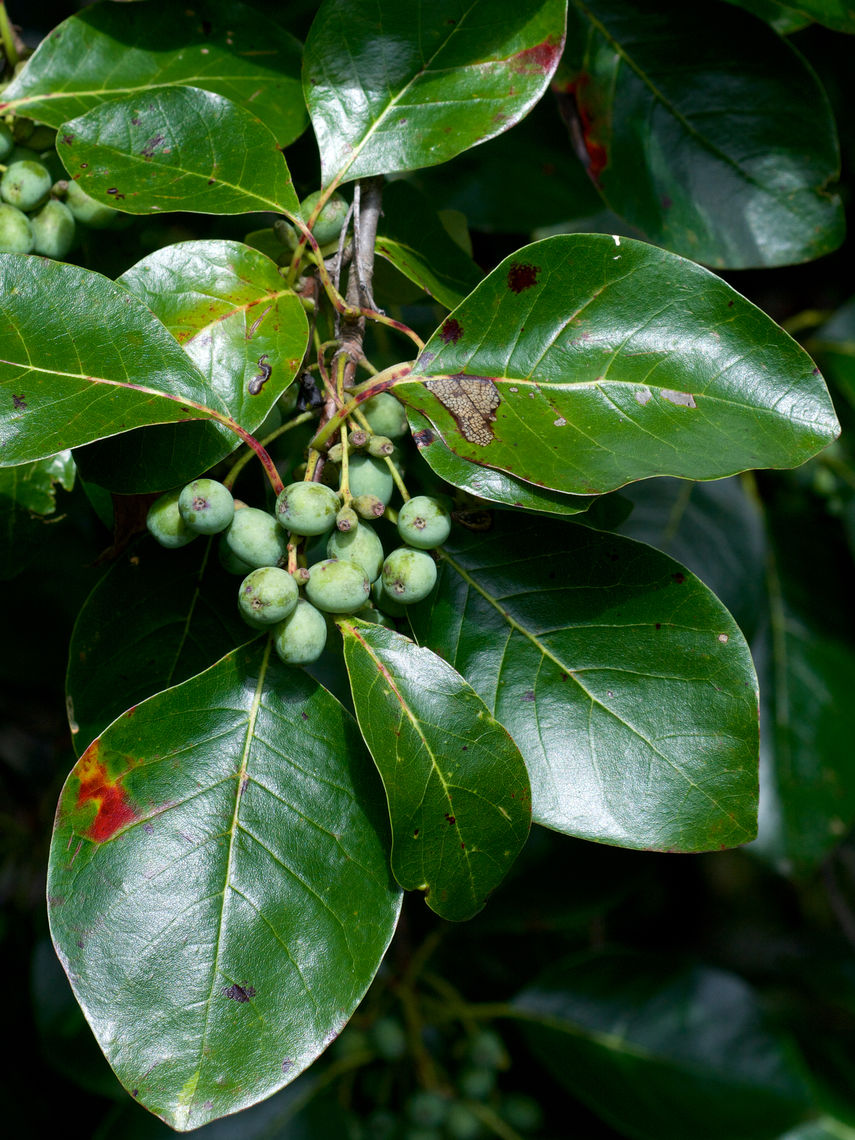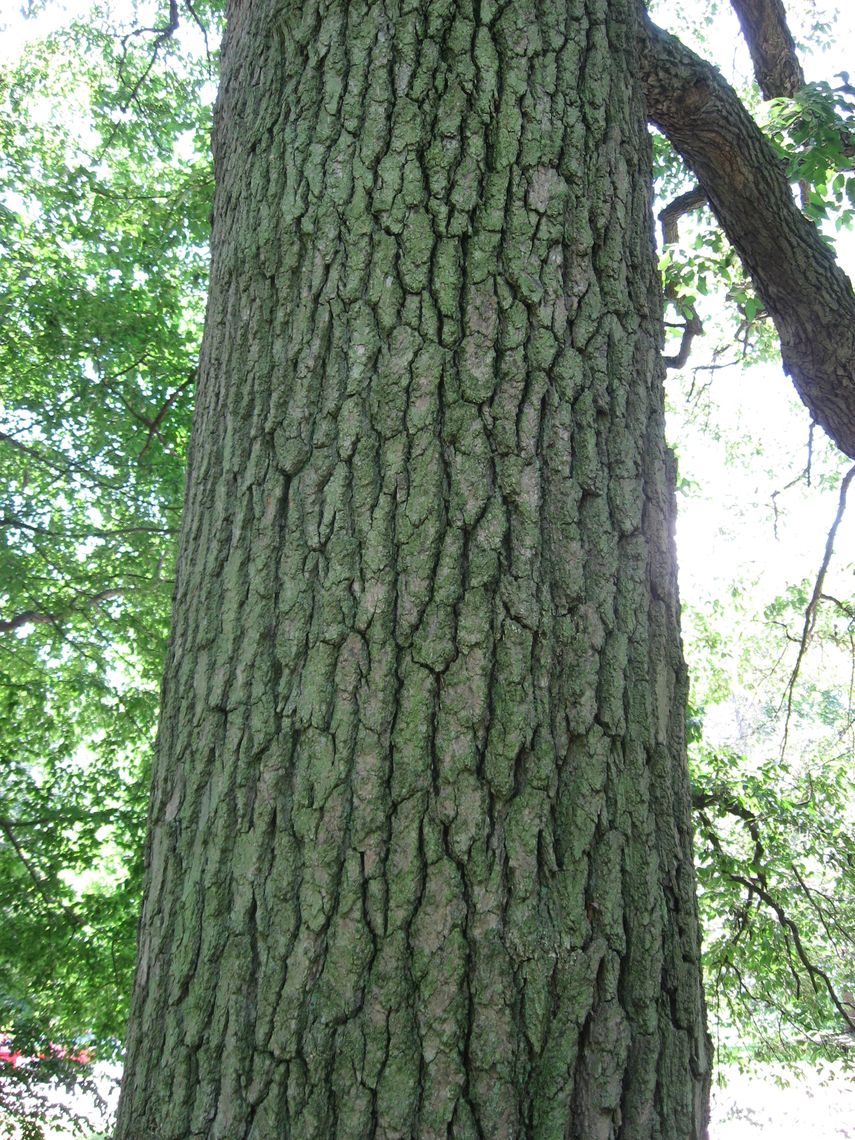Black Tupelo (Nyssa sylvatica)
The black tupelo is most well known for its variety of fall colors. As early as September, its leaves begin to change to fluorescent shades of yellow, orange, scarlet, and maroon. These colors particularly stand out against the tree's almost black bark. This bark has a blocky configuration and is said to resemble alligator skin. The tree's flowers are not very noticeable, but they are an excellent nectar source for bees. Female flowers give way to small oval shaped fruits. These berries turn dark blue when ripe and though they are edible, they are quite sour. This tree attracts birds, mammals, and insect pollinators.
Family: Nyssaceae (Sour Gum)
Characteristics: The 3-inch to 6-inch-long leaves are elliptical, glossy, and dark green. As early as September, leaves turn fluorescent shades of yellow, orange, scarlet, and maroon. In the spring, small, green-white flowers emerge on long stalks. Female flowers occur in sparse clusters while male flowers occur in dense heads. Female flowers give way to small, oval fruits which mature to a dark blue. Bark is dark gray to black and is broken into a blocky configuration. This tree has a pyramidal shape when young and may maintain this shape with age or become rounded. It grows 30-50 feet high and 20-30 feet wide.
Foliage: Deciduous (leaves lost seasonally)
Geographic Origin: Eastern North America (native)
Cultivation Notes: Requires low maintenance. Does best in full sun to part shade. Prefers acidic, moist, and well drained soils. This tree can tolerate poorly drained soils and can even grow in standing water. It is also tolerant to drought conditions. The tree's long taproot makes it difficult to transplant. Female trees need a male pollinator to produce fruit.
Number on Campus: 19
Sources: Dirr, Morton Arboretum, Missouri Botanical Garden




